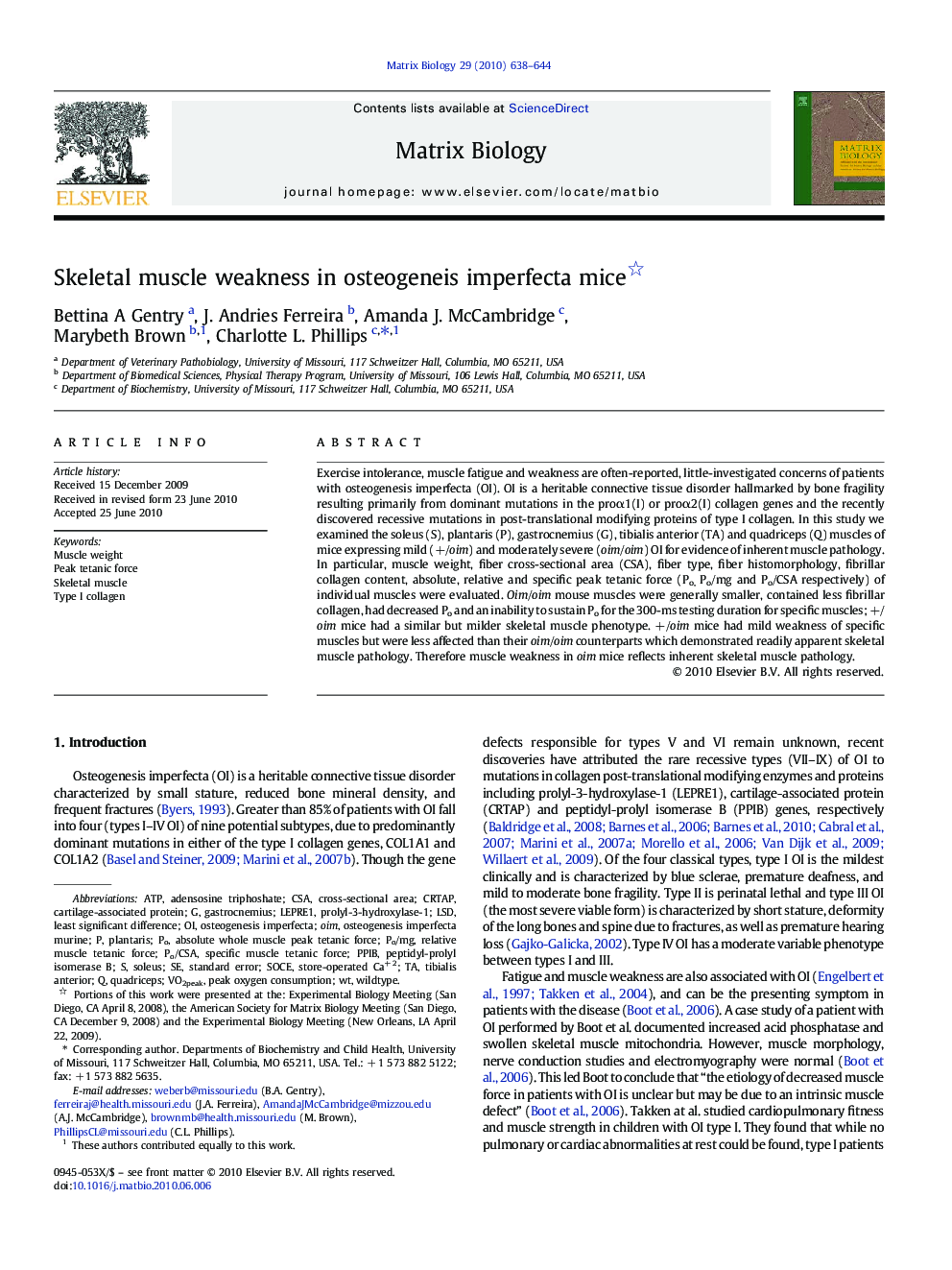| Article ID | Journal | Published Year | Pages | File Type |
|---|---|---|---|---|
| 10913914 | Matrix Biology | 2010 | 7 Pages |
Abstract
Exercise intolerance, muscle fatigue and weakness are often-reported, little-investigated concerns of patients with osteogenesis imperfecta (OI). OI is a heritable connective tissue disorder hallmarked by bone fragility resulting primarily from dominant mutations in the proα1(I) or proα2(I) collagen genes and the recently discovered recessive mutations in post-translational modifying proteins of type I collagen. In this study we examined the soleus (S), plantaris (P), gastrocnemius (G), tibialis anterior (TA) and quadriceps (Q) muscles of mice expressing mild (+/oim) and moderately severe (oim/oim) OI for evidence of inherent muscle pathology. In particular, muscle weight, fiber cross-sectional area (CSA), fiber type, fiber histomorphology, fibrillar collagen content, absolute, relative and specific peak tetanic force (Po, Po/mg and Po/CSA respectively) of individual muscles were evaluated. Oim/oim mouse muscles were generally smaller, contained less fibrillar collagen, had decreased Po and an inability to sustain Po for the 300-ms testing duration for specific muscles; +/oim mice had a similar but milder skeletal muscle phenotype. +/oim mice had mild weakness of specific muscles but were less affected than their oim/oim counterparts which demonstrated readily apparent skeletal muscle pathology. Therefore muscle weakness in oim mice reflects inherent skeletal muscle pathology.
Keywords
Related Topics
Life Sciences
Biochemistry, Genetics and Molecular Biology
Cancer Research
Authors
Bettina A Gentry, J. Andries Ferreira, Amanda J. McCambridge, Marybeth Brown, Charlotte L. Phillips,
